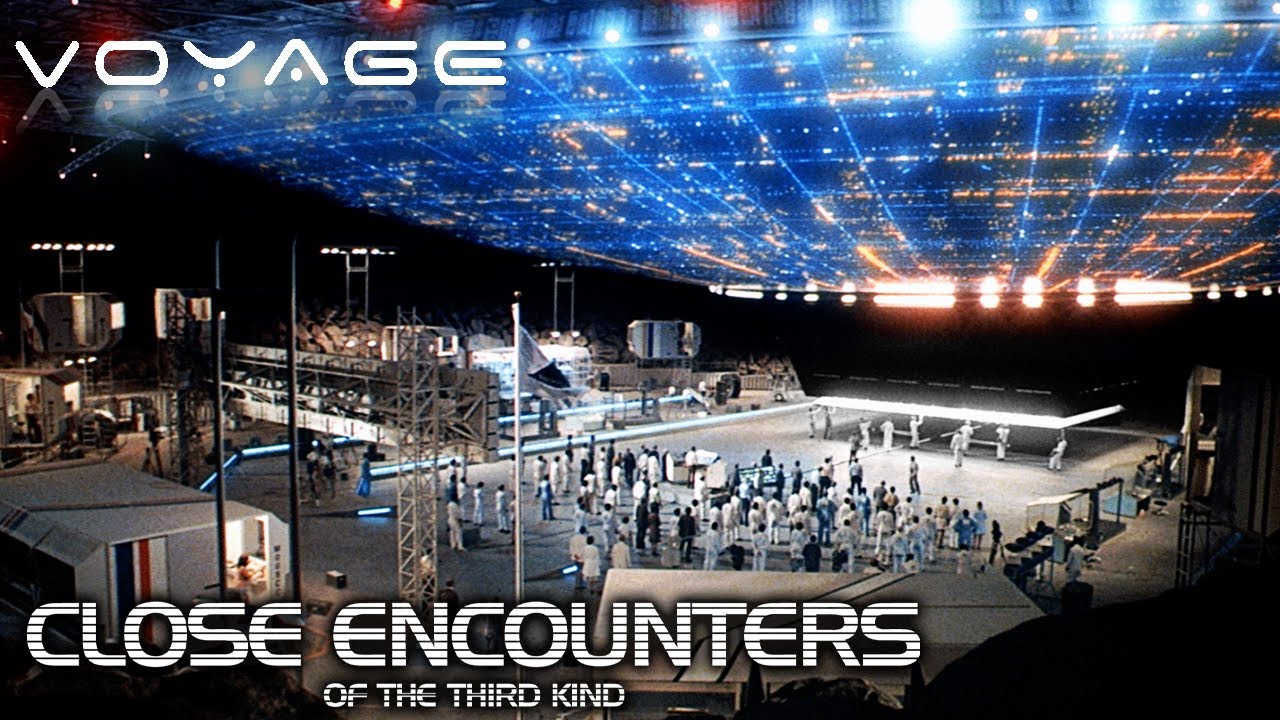Close Encounters of the Third Kind (1977)

“Close Encounters of the Third Kind,” directed and written by Steven Spielberg and released in 1977, stands as one of the most significant films in the science fiction genre. Renowned for its innovative storytelling, groundbreaking visual effects, and poignant exploration of human experience, the film has captivated audiences for decades. With a stellar cast featuring Richard Dreyfuss, Melinda Dillon, Teri Garr, Bob Balaban, Cary Guffey, and François Truffaut, “Close Encounters” delves into themes of communication, obsession, and the quest for knowledge, ultimately challenging our understanding of existence beyond Earth.
The film opens with a mysterious event that sets the tone for the entire narrative. After a group of military pilots encounters an unidentified flying object (UFO) in the skies above Wyoming, the world is thrown into a state of wonder and confusion. This initial incident serves as a catalyst for the subsequent events, leading to a series of strange occurrences that affect both the individual and the collective experience of humanity. Spielberg masterfully crafts an atmosphere of intrigue and suspense, inviting viewers to ponder the possibility of extraterrestrial life and the implications of contact with otherworldly beings.
At the heart of “Close Encounters” is the character of Roy Neary, played by Richard Dreyfuss. Roy is a blue-collar worker whose life is turned upside down after his encounter with a UFO. The experience ignites an obsession within him, leading him to become increasingly isolated from his family and society. Dreyfuss delivers a compelling performance that captures Roy’s transformation from an ordinary man to an individual consumed by his quest for understanding. This journey reflects the broader theme of how the search for truth can alienate individuals from their loved ones, echoing the sacrifices often made in the pursuit of knowledge.
The film introduces several other key characters who enhance the narrative. Jillian Guiler, portrayed by Melinda Dillon, is a mother searching for her missing son, who has been taken by the extraterrestrial beings. Her emotional journey parallels Roy’s, showcasing the profound effects of these otherworldly encounters on personal relationships. Teri Garr plays Ronnie Neary, Roy’s wife, who grapples with her husband’s obsession and the strain it places on their family. The contrasting perspectives of these characters create a rich tapestry of human emotion, emphasizing the film’s exploration of familial bonds and the impacts of obsession.

One of the film’s most iconic elements is its groundbreaking visual effects, which were revolutionary for the time. The depictions of UFOs and their interactions with Earth are visually stunning, created using innovative techniques that pushed the boundaries of special effects in cinema. The climactic scene featuring the mothership is a testament to Spielberg’s vision, combining practical effects with cutting-edge technology to create a mesmerizing spectacle. The use of light and color not only enhances the visual experience but also serves as a metaphor for communication and connection, reinforcing the film’s central themes.
The film’s score, composed by John Williams, plays a crucial role in establishing its emotional depth and atmosphere. The haunting musical motifs and the iconic five-note theme associated with the aliens serve as a form of communication, bridging the gap between humans and extraterrestrial beings. Williams’ score adds layers of meaning to the narrative, evoking a sense of wonder and mystery that complements the film’s visuals. The interplay between sound and image enhances the viewer’s experience, drawing them deeper into the story and its themes.

“Close Encounters of the Third Kind” also delves into the concept of communication—both between humans and extraterrestrial entities, and among individuals grappling with their own experiences. The film poses profound questions about the nature of contact: How do we convey our thoughts and emotions to those who are fundamentally different from us? The climax, where the humans and aliens communicate through music and light, symbolizes the potential for understanding and connection, transcending the barriers of language and culture. This moment is both triumphant and poignant, highlighting the innate human desire to reach out and connect with the unknown.

The film’s narrative structure is notable for its gradual buildup of tension and intrigue. Spielberg expertly balances moments of suspense with scenes of quiet reflection, allowing the audience to immerse themselves in the characters’ journeys. As the film progresses, the stakes become higher, leading to a thrilling climax that offers both resolution and ambiguity. The ending, with Roy’s ultimate choice to board the alien mothership, serves as a powerful statement about the human desire for exploration and understanding, even in the face of the unknown.
“Close Encounters of the Third Kind” has left a lasting impact on the science fiction genre and popular culture. Its influence can be seen in countless films and television shows that followed, shaping the way extraterrestrial life is portrayed on screen. The film’s themes of curiosity, connection, and the search for meaning continue to resonate with audiences, making it a timeless classic.

In conclusion, “Close Encounters of the Third Kind” is a cinematic masterpiece that transcends the boundaries of science fiction. Through its compelling characters, groundbreaking visual effects, and haunting score, the film invites viewers to ponder profound questions about existence, communication, and the nature of humanity. Spielberg’s masterful direction and storytelling create an experience that is both thrilling and thought-provoking, ensuring its place in the pantheon of great films. As we continue to explore the mysteries of the universe, “Close Encounters” remains a poignant reminder of our quest for understanding and connection, both with each other and the cosmos beyond.
Suggested videos for you:
Suggested videos for you:
Suggested videos for you:











